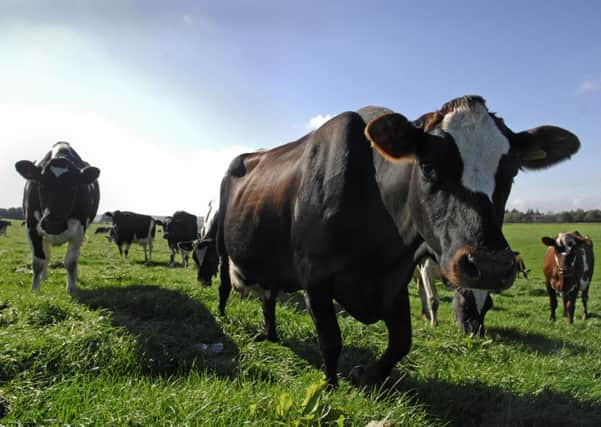Big price falls see hundreds quit milk industry


Some 1,999 dairy farmers operated in the region in 2000 but today there are just 685, DairyCo figures show.
The decline is mirrored nationally. For the first time, there are fewer than 10,000 dairy farmers in England and Wales, a drop which is largely explained by deep price cuts that have left farmers with tough choices to make for the sake of their family’s future.
Advertisement
Hide AdAdvertisement
Hide AdThe capitulation has not been without resistance. Dairy farmers that have remained have increased herd sizes and production. An average herd comprised of 134 cattle in 2013, up from 86 in 2000, and production per beast rose from 5,979 litres to 7,531.
But price crashes, high input costs and stringent regulation have taken their toll. There were 500,000 fewer dairy cows in England and Wales over the same period, leaving the national herd numbering 1.3 million.
David Shaw, a dairy farmer near York and regional dairy board chairman at the National Farmers’ Union (NFU), said: “It’s a very difficult decision for a family farm to make (to quit) but the situation gets more serious as time goes on, not because of inefficiency or that they can’t do the job properly, simply because the cost of production is higher than the price they’re getting back and they can’t pay their bills.”
Milk prices have tumbled since last February, from an average of 33.95 pence per litre (ppl) then, to 27.85ppl in December. The NFU said some farmers now get as little as 19ppl.
Advertisement
Hide AdAdvertisement
Hide AdProcessors and retailers blame global factors; the trade embargo imposed by Russia and reduced demand from China, with world milk supply outstripping demand.
Mr Shaw said: “We just can’t carry on like this. We’re losing money on every litre of milk we produce and I can’t see how that can continue. Something has to change in the way we do business.”
There is little overseas trade in liquid milk but considerable trade in processed products like butter and cheese.
Environment Secretary Elizabeth Truss wants to build on Britain’s dairy export trade: “There is much more we can do in terms of exports,” she said. “China is going to be the biggest importer of food by 2018. If we want to expand our dairy production, we need to find more markets overseas.”
Advertisement
Hide AdAdvertisement
Hide AdBut Nick Everington, chief executive of the Royal Association of British Dairy Farmers, expects the downward trend to continue.
“We remain concerned that if the current reduction in dairy farmers numbers continues, the UK will not have the production capacity in the medium to long term to respond to the upturn in dairy markets which will eventually occur.”
READ MORE...